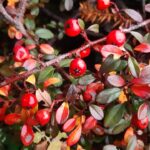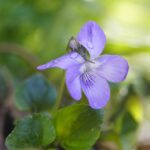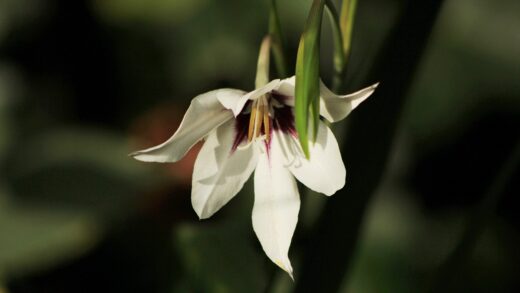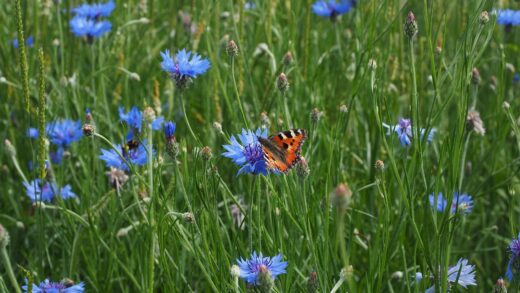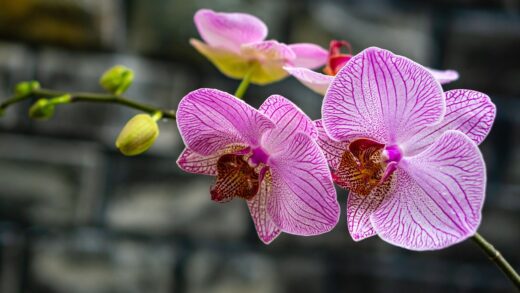Caring for the persian onion, a majestic ornamental allium, is a rewarding experience that brings a touch of architectural elegance to any garden. This plant is renowned for its large, globe-shaped, purple flower heads that sit atop tall, sturdy stems, creating a dramatic visual impact in late spring and early summer. Proper care ensures not only the health and longevity of the plant but also the vibrancy and size of its stunning blooms. Understanding its basic needs from the outset will set you on the path to success, allowing these beautiful plants to thrive and become a recurring highlight in your garden year after year. To achieve this, a gardener must consider several key aspects of its lifecycle, from planting the bulbs in autumn to post-flowering care.
The foundation of successful cultivation lies in selecting a suitable location and preparing the soil adequately. Persian onions thrive in a position that receives full sun for at least six to eight hours a day, as this is crucial for strong stem development and prolific flowering. The soil must be well-draining, as the bulbs are susceptible to rot in waterlogged conditions. It is highly beneficial to amend heavy clay soils with organic matter like compost or well-rotted manure to improve its structure and drainage. A slightly alkaline to neutral soil pH is ideal, so it might be worthwhile to test your soil and adjust it if necessary before planting.
Once the flowering season is over, typically by mid-summer, the care routine shifts to preparing the plant for dormancy. It is tempting to remove the fading foliage, but it is critically important to allow the leaves to die back naturally. The leaves are busy photosynthesizing and sending energy down to the bulb, which is essential for the following year’s flower production. Cutting the leaves off prematurely will rob the bulb of these vital nutrients, resulting in weaker growth and fewer, smaller flowers in the subsequent season. You can, however, remove the spent flower heads to prevent the plant from expending energy on seed production, unless you wish to collect the seeds.
Throughout the growing season, a watchful eye for any signs of stress or disease is part of good care. While generally robust, they can occasionally be affected by issues that plague other members of the onion family. Regular monitoring allows for early intervention, which is often the key to preventing a minor problem from becoming a major one. Keeping the area around the plants free of weeds is also important, as this reduces competition for water and nutrients and can also help to minimize the presence of pests and diseases. This consistent attention to detail throughout the year is what truly defines expert care for these magnificent plants.
Understanding the growth cycle
The annual growth cycle of the persian onion begins in the autumn when the bulbs are planted. This is a critical period where the bulb establishes its root system before the ground freezes. These roots are essential for anchoring the plant and for absorbing moisture and nutrients once growth commences in the spring. Throughout the winter, the bulb remains dormant, resting and storing energy for the vigorous growth that is to come. This cold period is actually a requirement for many alliums, a process known as vernalization, which is necessary to trigger the flowering mechanism.
As the soil warms in early spring, the first signs of life emerge as green shoots push through the soil. These shoots rapidly develop into a rosette of broad, strap-like, grey-green leaves. This foliage is not only attractive in its own right but serves a vital purpose in fueling the development of the flower stalk. During this phase, the plant requires consistent moisture and nutrients from the soil to support this rapid growth. The leaves absorb sunlight and convert it into the energy needed to produce the tall, robust stems that will support the impressive flower heads.
By late spring, the main event begins as a thick, leafless stem, known as a scape, rises from the center of the foliage. This scape can reach a considerable height, often up to a meter or more, and is topped by a large, papery spathe that encloses the developing flower bud. As the bud swells, the spathe splits open to reveal a tightly packed sphere of tiny, star-shaped, purple florets. The flowering period is the culmination of the growth cycle, providing a spectacular display that can last for several weeks and attract a host of pollinators to the garden.
Following the flowering period, the plant’s energy focus shifts from blooming to energy storage. The flowers will fade and the foliage will begin to yellow and wither, a process that should be allowed to complete naturally. All the remaining energy from the leaves is drawn back down into the bulb to be stored for the next year’s growth. Once the foliage has completely died back, the plant enters its summer dormancy period, resting in the warm, dry soil until the cycle begins anew with the cooling temperatures of autumn.
Site selection and soil preparation
Choosing the right site is arguably the most critical step in ensuring the long-term health and spectacular performance of your persian onions. These plants are sun-worshippers and require a location that provides at least six to eight hours of direct sunlight each day. Insufficient sunlight will lead to weak, spindly stems that may struggle to support the weight of the large flower heads, and the flowering itself may be sparse or fail altogether. Therefore, an open, unshaded area of the garden is the ideal choice for these impressive ornamentals.
Beyond sunlight, the quality of the soil is paramount, with drainage being the single most important factor. Allium aflatunense bulbs will quickly succumb to rot if they are left sitting in soil that remains wet and boggy, particularly during their winter dormancy. To test your soil’s drainage, you can dig a hole about 30 cm deep and fill it with water; if the water has not drained away within a few hours, your soil likely has poor drainage. In such cases, it is essential to improve the soil structure before planting.
Amending the soil is the best way to improve its drainage and nutrient content. For heavy clay soils, incorporating generous amounts of organic matter such as garden compost, leaf mould, or well-rotted manure will help to break up the dense clay particles and create a more friable, free-draining structure. For sandy soils, which drain too quickly, adding organic matter will help to improve moisture and nutrient retention. It is also beneficial to add some coarse grit or sharp sand to heavy soils to further enhance drainage.
Preparing the planting bed should be done with care. Loosen the soil to a depth of at least 30 cm, removing any weeds, stones, or other debris. This deep cultivation ensures that the bulbs’ roots can penetrate easily into the soil to find moisture and nutrients. This is also the ideal time to incorporate your chosen soil amendments, mixing them thoroughly with the existing soil to create a uniform, hospitable environment for the bulbs. A well-prepared bed not only prevents common problems like bulb rot but also provides the foundation for vigorous growth and stunning floral displays for years to come.
Watering and feeding throughout the season
Proper watering is crucial during the active growing period of the persian onion, which spans from early spring until after flowering. During the spring, as the leaves and flower stalks are rapidly developing, the soil should be kept consistently moist but not waterlogged. A lack of water during this critical phase can result in stunted growth and smaller flower heads. It is generally best to water deeply and infrequently, allowing the top few centimetres of soil to dry out between waterings. This encourages the roots to grow deeper into the soil in search of moisture, making the plant more resilient.
Once the flowers have faded and the foliage begins to yellow, you should significantly reduce watering. The plant is entering its summer dormancy period, and the bulbs prefer to be kept relatively dry during this time. Excessive moisture in the soil during summer dormancy can increase the risk of bulb rot, which is one of the most common reasons for failure with ornamental alliums. In most climates with moderate summer rainfall, you may not need to provide any supplemental water at all during this period.
Feeding the persian onion will provide it with the necessary nutrients to produce its spectacular blooms year after year. The best time to apply fertilizer is in the early spring, just as the first shoots are emerging from the ground. A balanced, slow-release granular fertilizer with a good amount of potassium is ideal. Potassium is particularly important for strong bulb development and flower production. You can simply sprinkle the granules around the base of the plants according to the manufacturer’s instructions and gently work them into the top layer of soil.
Avoid using high-nitrogen fertilizers, as these can promote excessive, soft leafy growth at the expense of the flowers. This lush foliage can also be more susceptible to pests and diseases. A single application of a slow-release fertilizer in the spring is usually sufficient for the entire growing season. Alternatively, you can apply a liquid feed, such as a tomato fertilizer, every few weeks from early spring until the flower buds begin to show colour. This consistent supply of nutrients will ensure your persian onions have everything they need to put on a truly magnificent show.
Post-flowering care and dormancy
After the vibrant purple spheres of the persian onion have faded, the plant’s focus shifts from a spectacular floral display to the crucial task of preparing for the following year. It is at this point that proper post-flowering care becomes essential. The most important rule to follow is to resist the urge to tidy up too quickly by removing the leaves. The foliage, although it may start to look a bit untidy as it yellows and withers, is performing a vital function. It is acting as a solar panel, capturing the sun’s energy and converting it into food, which is then transported down and stored in the bulb for next season’s growth.
Cutting the leaves back prematurely while they are still green is one of the most common mistakes made in allium care. Doing so severely hampers the bulb’s ability to store energy, which will inevitably lead to a much-reduced or even non-existent floral display the following year. You should wait until the leaves have turned completely yellow or brown and have withered away on their own. At this point, they will have given all their energy back to the bulb and can be easily pulled away or trimmed at the base without causing any harm to the plant.
While the foliage should be left intact, the spent flower heads can be dealt with differently. If you do not wish for the plant to self-seed, it is a good practice to deadhead by snipping off the flower stalk at its base. This prevents the plant from expending its valuable energy on producing seeds and instead directs all that energy into building up the bulb. However, the dried seed heads can be quite attractive in their own right, adding architectural interest to the garden border well into the autumn and winter, so you may choose to leave them in place for aesthetic reasons.
Once the foliage has completely died back, the bulb enters its summer dormancy period. During this time, it prefers warm and dry conditions, which mimic its native habitat. It is important to avoid overwatering the area where the bulbs are planted throughout the summer months. In fact, in many gardening zones, regular summer rainfall provides more than enough moisture. Keeping the soil on the drier side during dormancy is key to preventing the bulbs from rotting and ensuring their survival until the growth cycle begins again in the autumn.
Managing pests and diseases
The persian onion is a relatively robust and trouble-free plant, thanks in large part to the same sulfurous compounds that give culinary onions their pungent aroma, which tends to deter many common garden pests. However, no plant is completely immune to problems, and being aware of potential issues is key to keeping your alliums healthy. Good garden hygiene is the first line of defence; keeping the area around your plants free from weeds and debris can help to minimize the risk of pests and diseases taking hold.
One of the few pests that can occasionally trouble ornamental alliums is the allium leaf miner. The adult flies lay their eggs on the foliage in the spring, and the resulting larvae tunnel into the leaves, creating distinctive winding trails. While a minor infestation is unlikely to cause significant harm to the plant’s health, a severe one can weaken it. To prevent this, you can cover your emerging alliums with fine insect-proof mesh in the spring to stop the adult flies from laying their eggs. If you do notice an infestation, removing and destroying the affected leaves can help to control its spread.
When it comes to diseases, the most significant threat to persian onions is bulb rot, which is almost always caused by poorly drained, waterlogged soil. This is why thorough soil preparation and choosing the right site are so crucial. Symptoms of rot include yellowing, wilting foliage and a soft, decaying bulb. Unfortunately, once a bulb has started to rot, it cannot be saved and should be removed and destroyed to prevent the spread of fungal pathogens to other plants. Always ensure your soil is free-draining to avoid this common problem.
Downy mildew is another fungal disease that can affect alliums, particularly in damp, humid conditions. It appears as greyish or purplish patches on the leaves, which eventually turn yellow and die back. To reduce the risk of downy mildew, ensure there is good air circulation around your plants by not overcrowding them. Watering at the base of the plant rather than overhead can also help, as this keeps the foliage dry. If you do encounter downy mildew, removing affected leaves promptly can help to stop it from spreading.











